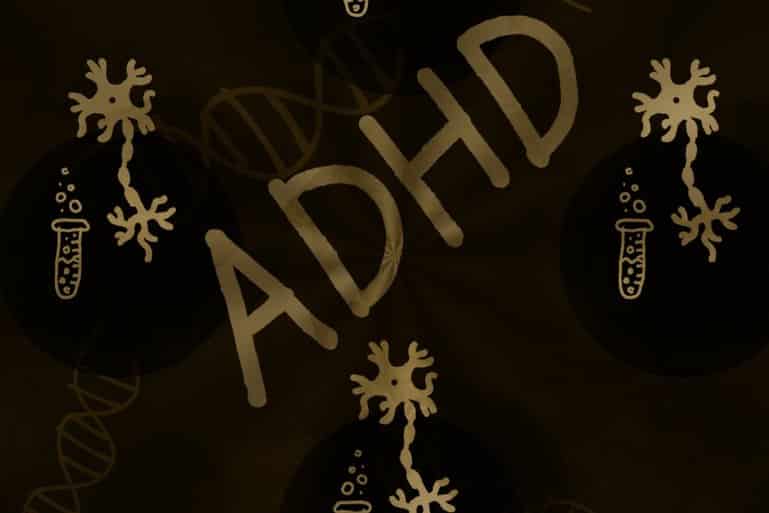Summary: A neuroimaging study found children aged 9 – 10 with ADHD have few differences in structural brain measurements compared to their peers without ADHD.
Source: Duke University
MRI scans of children aged 9 to 10 years with ADHD showed few differences in structural brain measurements compared to their unaffected peers, according to a study led by a Duke University School of Medicine researcher.
While providing little evidence of brain differences that are identifiable by MRI, the finding points to the need for more refined imaging techniques to better characterize the underlying biology of ADHD, which is diagnosed in an estimated 9 percent of children in the U.S.
The study appears online in The Lancet Psychiatry.
“There has been an ongoing debate dating back decades about whether ADHD is in fact a true biological disorder, or if it instead reflects normal variation in attention and related behaviors,” said senior author Jonathan Posner, M.D., vice chair of research at Duke’s Department of Psychiatry & Behavioral Sciences.
“While this finding rekindles that long-standing debate, we do believe it is a biological disorder,” Posner said. “It can be both—a biological disorder, but also have normal variations within that.”

Posner and colleagues analyzed data from a large longitudinal study called the Adolescent Brain and Cognitive Development Study, which included 10,736 participants. Of those children, 949 met the criteria for ADHD. Upon enrollment in the study, the children underwent brain imaging scans as well as other psychological and medical tests.
In their analysis, the researchers compared the brain scans of the children diagnosed with ADHD to scans of those who did not have the diagnosis. The researchers found only 11 significant differences across the 79 brain measures, all indicating reductions in brain measures among participants with ADHD. The researchers note that these differences, while statistically significant, were quite small and unlikely to help in diagnosing ADHD.
The authors said the findings run counter to other, smaller studies that have identified larger and more widespread structural brain differences between children with ADHD and those without the diagnosis. The researchers said the findings might be explained by the older ages of their study participants, and by fewer children among the study group with severe cases of ADHD.
“It’s important to note that ADHD can be impairing,” Posner said. “Treatments help with that. And while we don’t have good evidence of structural differences appearing in MRI scans, that could well speak to the limitations of the technology, not of ADHD being outside of biology.”
About this ADHD research news
Author: Sarah Avery
Source: Duke University
Contact: Sarah Avery – Duke University
Image: The image is in the public domain
Original Research: Closed access.
“Structural brain measures among children with and without ADHD in the Adolescent Brain and Cognitive Development Study cohort: a cross-sectional US population-based study” by Joel Bernanke et al. Lancet Psychiatry
Abstract
See also

Structural brain measures among children with and without ADHD in the Adolescent Brain and Cognitive Development Study cohort: a cross-sectional US population-based study
Background
Structural neuroimaging research has identified a variety of abnormalities in cortical and subcortical structures in children with ADHD. However, studies to date have not employed large, non-referred samples, complete with data on potential confounding variables. Here, we tested for differences in structural MRI measures among children with and without ADHD using data from the Adolescent Brain and Cognitive Development (ABCD) Study, the largest paediatric brain imaging study in the USA.
Methods
In this cross-sectional study, we used baseline demographic, clinical, and neuroimaging data from the ABCD Study, which recruited children aged 9–10 years between Sept 1, 2016, and Aug 31, 2018, representative of the sociodemographic features of the US population. ADHD was diagnosed by parent report of symptoms. Neuroimaging data underwent centralised quality control and processing by the ABCD team. Linear mixed effects models were used to estimate Cohen’s d values associated with ADHD for 79 brain measures of cortical thickness, cortical area, and subcortical volume. We used a novel simulation strategy to assess the ability to detect significant effects despite potential diagnostic misclassification.
Findings
Our sample included 10 736 participants (5592 boys, 5139 girls; 5692 White, 2165 Hispanic, 1543 Black, 221 Asian, and 1100 of other race or ethnicity), of whom, 949 met the criteria for ADHD and 9787 did not. In the full model, which included potential confounding variables selected a priori, we found only 11 significant differences across the 79 brain measures after false discovery rate correction, all indicating reductions in brain measures among participants with ADHD. Cohen’s d values were small, ranging from −0·11 to −0·06, and were not meaningfully changed by using a more restrictive comparison group or alternative diagnostic methods. Simulations indicated adequate statistical power to detect differences even if there was substantial diagnostic misclassification.
Interpretation
In a sample representative of the general population, children aged 9–10 years with ADHD differed only modestly on structural brain measures from their unaffected peers. Future studies might need to incorporate other MRI modalities, novel statistical approaches, or alternative diagnostic classifications, particularly for research aimed at developing ADHD diagnostic biomarkers.
Funding
Edwin S Webster Foundation and Duke University, NC, USA.
Credit: Source link





















